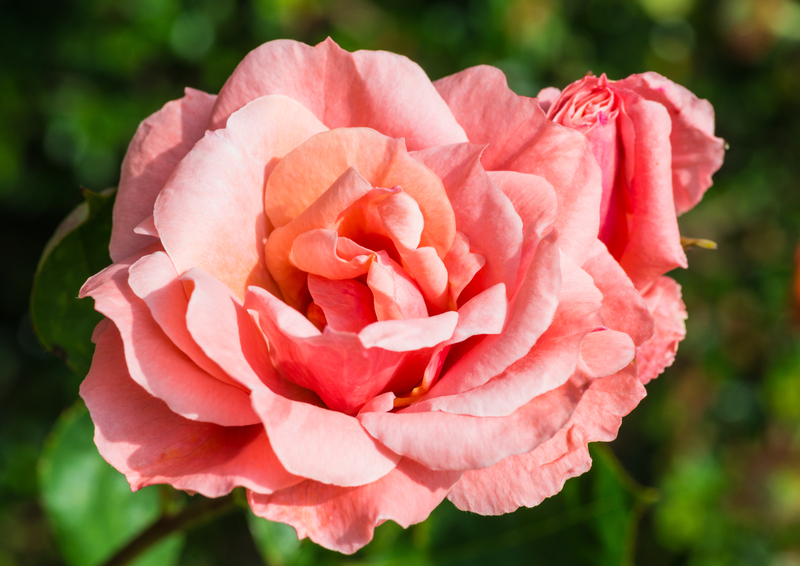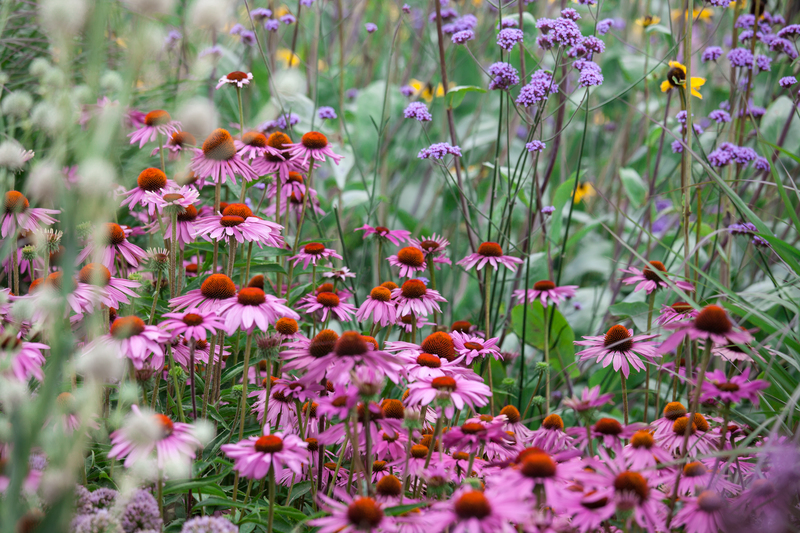Winter Plant Protection: Keep Your Garden Thriving
Posted on 27/05/2025
Winter Plant Protection: Keep Your Garden Thriving
As the days grow shorter and temperatures dip, many gardeners worry about the impact of winter on their cherished plants. However, with the right methods for winter plant protection, you can maintain a thriving and resilient garden even in the coldest months. This comprehensive guide will walk you through the best practices for keeping your garden winter-ready, ensuring your plants can survive and flourish when spring returns.
Why Is Winter Plant Protection Important?
Winter can be a harsh season for gardens. Freezing temperatures, frosts, biting winds, and even fluctuating humidity play havoc on both garden and container plants. Winter garden care isn't just a matter of survival; it helps establish healthier, more vigorous plants for the following growing season. Effective winter plant protection techniques keep your landscape attractive year-round, saving time and energy in the spring.
Key Factors Affecting Plants During Winter
- Freezing Temperatures: Ice crystals can damage plant cells, cause root damage, and kill less hardy species.
- Frost: Early or late frosts can surprise plants and kill new growth or sensitive species overnight.
- Dehydration: While water isn't always available, especially when soil freezes, winter winds and sun can dry plants out.
- Snow Load: Heavy snow can break branches and crush delicate plants or evergreens.

Preparing Your Garden for Winter
The best time to begin winter plant protection is in the fall, before the first frost strikes. Early action ensures your garden is ready for cold snaps and reduces plant stress. Here are the most critical steps:
Clear and Clean Up
- Remove any diseased or dying foliage to prevent overwintering pests and diseases.
- Clean up fallen leaves, particularly around perennials and rose bushes, to avoid fungal infections.
- Dispose of annuals that will not survive winter, or compost healthy remains.
Water Deeply Before the Ground Freezes
One of the most overlooked aspects of winter plant protection is proper hydration. Plants, especially newly planted trees and shrubs, should be watered thoroughly before the severe cold sets in. Moist soil retains heat better than dry soil, providing an insulating effect for roots.
Mulch for Insulation
Mulching is essential for winter garden protection. Organic mulch acts as a blanket for roots, moderating soil temperatures and reducing moisture loss. Apply a 2-4 inch layer of straw, shredded leaves, bark, or pine needles around the base of trees, perennials, and shrubs.
- Tip: Keep mulch a few inches away from plant stems or trunks to prevent rot and rodent damage.
Prune with Caution
Prune only dead, diseased, or damaged branches in autumn. Extensive pruning can stimulate tender new growth that will not survive the cold. Reserve significant shaping or cutting back until late winter or early spring, depending on the plant's needs.
Smart Strategies for Winter Plant Protection
Every garden is unique, so choosing methods tailored to your specific climate and plants is crucial to winterizing plants effectively. Below are proven techniques for diverse garden types and winter conditions.
Protecting Perennials
- Cut Back Correctly: For herbaceous perennials, cut dying foliage a few inches above the ground to prevent pest harboring.
- Apply Mulch Generously: After the first hard frost, cover plant crowns to protect against freeze-thaw cycles.
- Consider Cloches or Plant Covers: For sensitive plants, use garden cloches, overturned pots, or fabric plant covers during harsh cold snaps.
Shielding Shrubs and Small Trees
- Burlap Wraps: Use burlap or frost cloth to wrap evergreens and newly planted shrubs, especially if exposed to harsh wind or salt spray.
- Snow Guards: Install guards or gently brush off heavy snow to prevent branch breakage.
Defending Delicate and Container Plants
- Move Containers Indoors: Relocate pots to a sheltered spot such as a garage, basement, or porch where temperatures stay above freezing.
- Insulate Pots: Wrap containers with bubble wrap or burlap, or cluster together for extra warmth. Raise pots off cold surfaces.
- Minimize Watering: Avoid overwatering during dormancy, but ensure soil does not dry out completely.
Protecting Vegetable Gardens
- Plant Cover Crops: Sow winter rye, clover, or vetch in empty beds to protect soil, prevent erosion, and add nutrients.
- Use Row Covers: Lightweight fabric or plastic row covers can extend the harvest season and protect cold-hardy vegetables from frost.
- Hoop Houses or Cold Frames: These simple structures trap heat, allowing for overwintering crops or even year-round gardening in mild climates.
Dealing with Common Winter Plant Pests and Challenges
Winter doesn't eliminate every garden threat. Here's how to tackle some persistent issues:
Winter Garden Pests
- Rodents and Rabbits: Place wire mesh around vulnerable trunks and stems. Keep mulch pulled back from trunks to deter nesting.
- Deer: Erect fences or use repellents for young trees and shrubs in areas with active deer populations.
- Insect Eggs: Dispose of infested fallen leaves and prune any remaining egg masses from branches.
Managing Winter Weather Extremes
- Windburn: Windbreaks, burlap screens, and anti-desiccant sprays can protect evergreen foliage from drying winds.
- Frost Heaving: Thick mulch insulates the ground, preventing roots from being lifted out of the soil during freeze-thaw cycles.
- Heavy Snow or Ice: Gently remove buildup from branches and structures to prevent damage. Avoid using de-icing salts near plants.
Special Tips for Indoor Plants in Winter
Don't forget your houseplants! Shorter days and home heating can stress indoor greenery.
- Light: Move plants to brighter windows; consider supplemental grow lights for sun-loving varieties.
- Humidity: Group plants or use trays of water to counteract dry indoor air.
- Temperature: Keep plants away from cold drafts and hot radiators.
- Water Smart: Water less frequently but do not allow pots to dry out entirely.
Winter Gardening FAQs
Can All Plants Be Protected from Harsh Winter Conditions?
*Not all plants are suited to every climate.* Focus winter plant protection efforts on marginally hardy species, young plants, or treasured perennials that might not make it through severe cold without extra help.
How Do I Know If My Plants Need Protection?
Research the hardiness zone of your plants. If they're rated for your region, minimal protection may be required. However, newly planted or non-native species often need extra care their first couple of winters.
Should I Fertilize My Plants in Winter?
In general, do not fertilize plants during dormancy. Feeding encourages new growth, which is vulnerable to cold and could weaken the plant. Wait until growth resumes in spring.
Eco-Friendly Approaches to Winter Plant Protection
Sustainability is as important in winter as it is in summer gardening. Here are some eco-friendly ways to defend your garden when cold weather arrives:
- Use Natural Mulch: Leaves, pine needles, and straw break down to nourish the soil.
- Minimize Plastic: Choose reusable row covers or burlap over disposable plastics for protecting plants.
- Encourage Beneficial Wildlife: Birdhouses offer shelter to insect-eaters that help control pests year-round.
- Compost: Utilize autumn's fallen leaves and plant debris to enrich your garden beds during winter.
Signs of Winter Damage and Recovery Tips
Even with the best protection measures, sometimes plants suffer winter injury. Here's how to spot trouble and help your garden bounce back:
Common Symptoms
- Brown, dry, or scorched leaves and needles (especially on evergreens)
- Bark splitting or cracking on tree trunks
- Dried out or blackened shoots and buds
- Heaved soil exposing roots
How to Promote Recovery
- Prune Dead Growth: Remove damaged or dead branches in late winter to encourage healthy regrowth.
- Water Thoroughly: As soon as the ground thaws, make sure perennials and shrubs receive adequate moisture.
- Fertilize Wisely: Begin feeding only when new growth is evident in spring.
- Monitor and Mulch: Reapply mulch where needed and watch for signs of returning pests or disease.

Planning Ahead for Next Winter
The ultimate key to winter plant protection is preparation. Keep a gardening journal to note which plants struggled, what worked well, and how weather patterns affected your landscape. Each year provides valuable lessons to help your garden not just survive, but thrive through winter and beyond.
Essential Supplies for Winter Garden Protection
- Organic mulch
- Burlap, frost cloths, or garden fleece
- Stakes and ties for securing wraps
- Row covers and cold frames
- Reusable containers for tender plants
Conclusion: Embrace Winter as a Vital Gardening Season
Winter is not just a time of dormancy--it's an opportunity to nurture, protect, and strengthen your plants for the year ahead. By implementing winter plant protection strategies like mulching, covering, careful pruning, and pest management, you ensure your beloved garden remains healthy, resilient, and beautiful until the arrival of spring. Prepare early, monitor conditions, and apply these expert tips to enjoy a lush and thriving landscape every season.
With these comprehensive winter garden protection techniques, your plants will be primed to burst back to life--as robust and vibrant as ever--when the snow melts and the days grow long once again.

